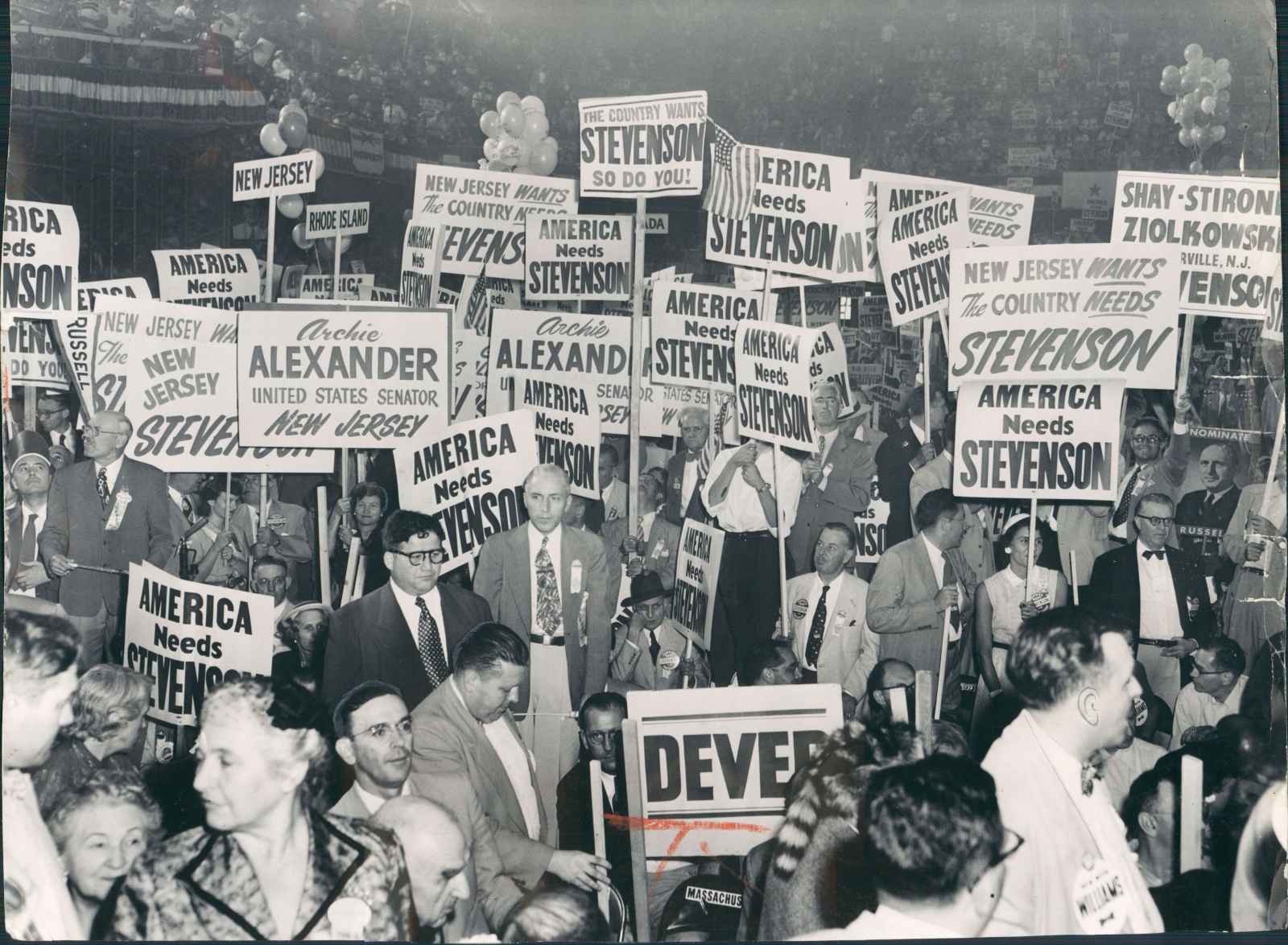
There’s talk that this summer’s Democratic National Convention in Milwaukee could be a contested convention, meaning no candidate has a majority of the pledged electoral votes. That leaves unpledged delegates free to vote for whomever they like to cast votes on a second ballot.
There’s also talk that if Sen. Bernie Sanders arrives with a plurality of delegates, but not a majority, he could be rejected in favor of a more moderate candidate, like former New York City mayor Michael Bloomberg.
It’s happened before. In fact, the last time it happened was here in Chicago, in 1952.
The victim? Sen. Estes Kefauver of Tennessee, who is best remembered for chairing the organized crime hearings that inspired several scenes in The Godfather, Part II.
Coming into the convention, which was held at the International Amphitheatre at Halsted and 42nd, Kefauver probably thought he had it in the bag. He’d won more primaries and controlled more delegates than any other candidate. A colorful figure who wore a coonskin cap and rode a dogsled at campaign appearances, Kefauver had started off the race by beating incumbent President Harry Truman in New Hampshire. This forced Truman to give up his hopes of winning a third term. The embarrassed president began calling the Kefauver “cow-fever” and plotting to deny him the nomination.
In those days, only 16 states held presidential primaries. Even though Kefauver won 12 of them, he controlled only 257 and a half delegates, far short of the 616 needed to win.
In most states, delegates were chosen the old-fashioned way: by party bosses. And the party bosses did not like Kefauver, whose hearings had exposed links between the Mafia and big-city Democratic machines. Working with Truman, they began looking for a more acceptable candidate. They found him in Illinois, the site of the convention.
Even before the primaries began, Truman had been recruiting Illinois Gov. Adlai Stevenson to succeed him. Stevenson had a big name: his grandfather had been one of Grover Cleveland’s vice presidents. He had also secured a big victory in 1948 over Republican Gov. Dwight Green — the worst defeat of an incumbent Illinois governor until 2018, when J.B. Pritzker clobbered Bruce Rauner.
Stevenson, who wanted a second term as governor, repeatedly said no to Truman’s suggestion that he run for president. But as the host state governor, he couldn’t turn down an invitation to address the convention.
Stevenson’s speech was a smash. Reminding the delegates that the New Deal had been born in Chicago, where Franklin D. Roosevelt was nominated for president in 1932, he attacked the Republicans for having called it a failure at their own convention, held at the Amphitheatre earlier in July:
“For almost a week pompous phrases marched over this landscape in search of an idea, and the only idea they found was that the two great decades of progress in peace, and of victory in war, and of bold leadership in this anxious hour, were the misbegotten spawn of bungling, of corruption, or socialism, of mismanagement, of waste and worse. … They captured, they tied and they dragged that ragged idea here into this hall and they furiously beat it to death for a solid week.”
The delegates loved it, clapping, stomping, and breaking into cries of “We want Stevenson!” Entreated by both Truman and Illinois power broker Jacob Arvey, 24th Ward committeeman and head of the Chicago Park District, Stevenson allowed himself to be nominated.
After the first ballot, Stevenson trailed Kefauver, 340-273. Neither candidate was close to a majority, so the nomination fight went to a second ballot — the last time that happened at a major party convention. This time, the vote was 362 and a half for Kefauver, and 324 for Stevenson. Finally, on the third ballot, several minor candidates dropped out and threw their support to Stevenson, giving him a majority.
The nomination was worthless, of course. Stevenson had won the hopeless task of running against Dwight D. Eisenhower, the popular general who planned the D-Day invasion. After 20 years of Democratic presidents, and with the Korean War at a stalemate, the country was ready for a change. Stevenson won only nine states, all in the “Solid South,” which still maintained its Civil War loyalty to the Democratic Party. He lost the Electoral College, 442 to 89.
Kefauver wasn’t bitter about the outcome. After again losing the nomination to Stevenson in 1956, he agreed to run as the party’s vice presidential candidate.
If there’s a contested convention this year, will the candidate with the most delegates again be denied the nomination? And if so, would that candidate accept the decision as gracefully as Kefauver?
Even as late as the 1950s, there was an acceptance of presidential nominations being decided in smoke-filled rooms (a term purportedly coined in Chicago, after Republican senators gathered at the Blackstone Hotel settled on Sen. Warren G. Harding of Ohio to end a convention that required 10 ballots to choose a nominee).
But that’s not the case today, when every state holds a primary to select delegates.
In the event of a contested convention, the candidate in Kefauver’s position would almost certainly be Bernie Sanders. Currently, FiveThirtyEight says Sanders is “the most likely Democrat to win the nomination,” but gives him a less than 50 percent chance of arriving to Milwaukee with a majority of delegates. At last week’s debate in Las Vegas, only Sanders said he believes the candidate who wins the most delegates should be the nominee, making it clear than neither he nor his supporters will accept the sort of back-room dealing that snatched the nomination from Kefauver.
“I think that will be a serious, serious problem for the Democratic Party, and I think it will wreak havoc on that person’s campaign,” he said.
Sanders has aready decided he’s not going to get Kefauvered — at least not without a fight.



